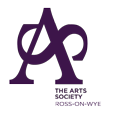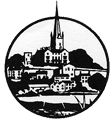Hungarian Rhapsody
A party of 25 set off on Tuesday, 11 September for six nights in Budapest, to see the city and its environs and to gain an introduction to the history and culture of the Hungarian peoples. As usual, Norman Allen Travel and Frances Clarke had compiled a very interesting - and sometimes testing - itinerary of castles, museums, churches, architectural splendours, and other attractions to visit. A surprisingly quick journey to Manchester airport, a jet2.com flight and a waiting coach at the other end got us there for dinner. We had our first introduction to Marta, our Hungarian guide, whose incredible knowledge covering all that we saw in the ensuing week was downloaded to us at some length in very good, idiomatic English - though some eyes seemed to glaze over at times.
Our hotel was not your average Novotel to look at: with a reasonably elegant turn-of-the-20thC. Secession-style fašade and foyer. It was well situated on the edge of the centre of Pest and well served by public transport - free to over 65's, of which there were a few in the party!
Day 2 started with a tour of the Opera House, built in Hapsburg times and rivalling its Viennese counterpart for architectural exhuberance: marble in abundance, ornate woodwork, silk wall-hangings, massive chandeliers, grand stairways and paintings on the walls and ceilings - and that's before you get to the vast stage and auditorium. Next, a visit to St. Stephen's Basilica, the principal Catholic church in Hungary, neo-Renaissance and designed to impress and awe the faithful.
That afternoon we went across the Danube to Buda for the fine picture-postcard view of the river and the city from one of its hills. Then, to Castle Hill in Old Buda to see the 13thC. Matthias church, which, though modest and restrained compared to St Stephen's soi-disant grandeur, was actually much more impressive. A busy day's programme was concluded, for those who kept going, by a selective guided tour of the National Gallery in the former Royal Palace; for a look at paintings which portrayed key events in the first nine hundred or so years of Hungary's history since the Magyars founded their European kingdom in 998 A.D. after migrating from India.
On Thursday we travelled to Godollo, some thirty miles north-east of Budapest, to the summer mansion of Emperor Franz Joseph and his Queen, Elisabeth. This is an 18thC building renovated and given by the Hungarian parliament to the couple on their wedding in 1854. It was restored to something like its former glories in the 1990's after years of deterioration and purloining of its treasures in the Second World War and during the Russian occupation. Baroque in style, its interiors are rich in gold leaf, mirrors and silk drapes, the more formal rooms of Franz Joseph's contrasting with the lighter, more colourful styles of Elisabeth's suites. Returning to Budapest for a late lunch in the restored Market Hall, we then had a free afternoon - though, with the weather having turned thoroughly wet and cold after a pleasantly warm two days, there was no great incentive to venture far.
Friday started grey, showery and cold, a fitting backcloth to our visit to the quaintly named Memento Statue Park on a bare, windswept hill just to the south-west of Buda. This is a low-key, ironic "celebration" of the monumental excesses of Soviet-era ideology, in the form of preserved gigantic metal statues and stonework proclaiming the all-conquering and heroic truth of communism. Most memorable were the massive metal boots of Stalin standing on a high pedestal -all that remained when his statue was cut off at the knees and toppled in the 1956 uprising.
A fairly brief visit to the Museum of Applied Arts, an Art Nouveau building with Indian overtones, followed. Here we saw examples of European innovative (for their time) design and craft from the middle ages to the 20thC.
With the weather now improving, after lunch we were taken to the Hungarian Parliament building with its neo-Gothic exterior - modelled with Westminster in mind - and very impressive interior with two chambers, one no longer used as an "upper" house, separated by a grand staircase with huge vaulted ceilings. In these post-Soviet times it represents to Hungarians a symbol of a democracy that has seldom been theirs to enjoy.
Three days to go no sign of faltering! The party set off early the next morning for a coach ride north-west of Budapest to the Danube Bend, well-timed to occur on a day of warmth and blue skies. First stop was Esztergom Cathedral, once the capital of Hungary and the then headquarters of the Catholic church in the country. To say that it is massive is an understatement; the 60-metre diameter dome is entirely in proportion with the rest of the building, which stands high above the river, with Slovakia on the opposite bank.
Then, on to lunch beside the Danube, followed by a brief, Hungarian champagne-fuelled cruise on a dramatically beautiful stretch of the river. Our return to Budapest was punctuated by a stop in the village of Szentendre, also on the river. A tourist trap, but notable for the Margit Kovacs Ceramic Museum - if one can cope with her primitive style - and some quaint village architecture.
The Saturday evening allowed an opportunity (taken by most of our group) to enjoy a concert of popular classical music, and songs from operetta and opera. This was very professionally performed by an ensemble of ten musicians and four singers, the latter, together with the lead violin, attired in stunning costume.
Sunday morning saw a tour of aspects of the Fine Arts Museum, which houses a strong collection of European, notably Dutch, painting. This coincided with an annual equestrian event for the capital, celebrating the Hussars of the Austro-Hungarian army, in the adjacent Heroes Square. Fiercely contested horse-racing in authentic uniform around the arena is a prelude to a procession around the city. After taking in the essence of this event we went over to the nearby main city park to see the Vajdahunyad Castle -a reproduction of various Hungarian buildings (some now in former territories) in many architectural styles - and to experience the market and fair that was attracting large numbers of locals on this special day in the Budapest calendar.
The free afternoon gave us an opportunity to return to areas of the city which had particularly appealed, or to rest in anticipation of the closing Dinner in the Carpathia Restaurant that evening. An authentic Hungarian meal was accompanied by an enthusiastic group of musicians.
The excellent weather of the last two days continued into Monday and, with departure from the hotel not until 4.30 p.m., there was ample time to see more of the city, its shops, and the Danube at will, and to enjoy one more good meal as one chose before heading to the airport for the flight to Manchester. The late night coach journey thence to Ross was achieved in record time, and the party headed for home at about 12.30 a.m.
All in all a very enjoyable, interesting and strongly memorable trip - and in excellent company. All we needed now was a holiday!
Philip Blunden

